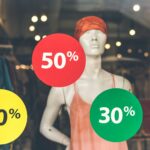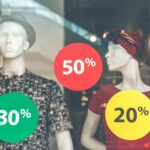Innovating the Future: How Plus-Size Fashion is Redefining Style and Inclusivity


Photo by Yaren Kılıç on Unsplash
Introduction: A New Era for Plus-Size Fashion
The plus-size fashion industry is on the brink of a transformative period, driven by the convergence of technology, sustainability, and changing consumer expectations. As body positivity gains momentum, designers and brands are reimagining what the future of plus-size fashion can be. This article explores the key innovations, market trends, and actionable strategies that are shaping the future-and offers guidance on how consumers and businesses can engage with this rapidly evolving sector.
Market Growth and Consumer Demand
The global plus-size women’s clothing market is expanding rapidly. In 2025, it is valued at USD 324.23 billion and projected to reach approximately USD 532.79 billion by 2034 , representing a compound annual growth rate (CAGR) of 5.68%. This growth is fueled by increasing demand for stylish, well-fitting apparel and a rising tide of body positivity and self-acceptance. As a result, retailers are broadening their product lines and offering more inclusive sizing, which in turn boosts consumer confidence and supports industry expansion [1] .
Design Innovations: Beyond Scaling Up
Modern plus-size fashion is moving far beyond the outdated practice of simply enlarging straight-size designs. Today’s brands employ advanced pattern-making techniques, draping, and fabric engineering to create clothing that flatters and supports diverse body shapes. For example, companies like 11 Honoré and Universal Standard collaborate with luxury and trend-forward designers to bring high-quality, inclusive styles to market, while LA-based Big Bud Press focuses on comfort and sustainability [2] .
To implement these innovations, designers must invest in specialized technical skills and customer feedback loops. Fashion houses often host focus groups or partner with influencers who embody their target demographic, ensuring collections resonate with consumers. Brands that prioritize thoughtful fit and structure see stronger customer loyalty and long-term growth.
Technology: AI, Personalization, and Smarter Shopping
Technology is revolutionizing the plus-size fashion experience. Artificial intelligence (AI) is now widely used to personalize recommendations, optimize sizing, and streamline the shopping journey. AI-powered fitting tools and virtual try-ons reduce returns and enhance satisfaction by suggesting tailored garments for individual body types. In 2025, over 80% of consumers want AI to simplify product research, and 50% of fashion executives believe generative AI is essential for product discovery [3] .
To access AI-driven fitting solutions, consumers can look for brands that advertise personalized shopping experiences on their websites or mobile apps. Many major retailers now feature virtual fitting rooms and size calculators, which typically require a brief survey of your measurements and fit preferences.
If you are developing a fashion business, consider investing in AI-based tools or partnering with established technology platforms that offer white-label virtual fitting solutions. This not only improves customer satisfaction but also reduces costly returns and fosters brand loyalty.

Photo by Aliya Amangeldi on Unsplash
Sustainability: Eco-Friendly Fabrics and Responsible Production
Environmental consciousness is no longer reserved for straight-size collections. Plus-size shoppers increasingly demand sustainable options, driving brands to experiment with recycled materials and responsible manufacturing processes. Companies like Torrid have launched dedicated sustainable collections, incorporating recycled polyester, nylon, and innovative fabrics to reduce waste and pollution [3] .
If you are searching for sustainable plus-size options, look for brands highlighting their use of eco-friendly materials in product descriptions. Key terms include “recycled polyester,” “organic cotton,” and “sustainable production.” For business owners, sourcing sustainable fabrics and transparently communicating your environmental initiatives can set you apart in a crowded market.
Inclusive Representation and the Power of Social Media
Though the commercial success of plus-size fashion is clear, runway and editorial representation have sometimes lagged behind. Social media, however, has emerged as a democratizing force-amplifying real body diversity and empowering consumers to shape trends directly. Influencers and activists use platforms like Instagram and TikTok to spotlight brands that offer inclusive sizing, fostering community and holding companies accountable [2] .
To engage with the inclusive fashion movement, follow hashtags such as #PlusSizeFashion, #BodyPositivity, and #SizeInclusivity. Participate in online conversations, share personal style, and support brands that represent diverse models. For brands, collaborating with plus-size influencers and featuring authentic, unretouched images can build trust and credibility.
Key Trends for 2025: Style, Comfort, and Statement Pieces
Current trends in plus-size fashion include bold, vibrant colors; soft pastels; tailored power suits; and sustainable fabrics. Electric blues, fiery reds, and neon greens are empowering consumers to express individuality, while soft pinks and earth tones offer versatility and sophistication [4] . Garments like wrap dresses, leotards, maxi dresses, and denim remain perennial favorites, with many brands updating classic silhouettes for modern tastes [5] .
If you want to incorporate these trends, start by adding a statement piece-such as a brightly colored blazer or a pastel wrap dress-to your wardrobe. Retailers often update their inventory in advance of seasonal peaks (June-July for summer, November for winter), so consider shopping during these times for the most options.
Practical Steps: Accessing Plus-Size Fashion Innovations
For shoppers looking to embrace the future of plus-size fashion, consider the following strategies:
- Research brands with a commitment to inclusive sizing and sustainability. Use brand websites or reputable online retailers to filter by size and material.
- Utilize AI-powered fitting tools and virtual try-ons when available. Many retailers feature these tools on their product pages or as part of their checkout process.
- Engage with communities on social media for recommendations, reviews, and style inspiration. These platforms can also alert you to new product launches and limited-edition collections.
- For made-to-measure or customizable options, look for brands that offer online consultations or digital measuring guides. These services may require submitting measurements or participating in a virtual fitting session.
For business owners and designers, actionable steps include:
- Invest in pattern development and fitting expertise tailored to plus-size bodies.
- Pilot sustainable material sourcing and communicate these efforts transparently to customers.
- Leverage AI and digital platforms to enhance the shopping experience and reduce returns.
- Collaborate with plus-size influencers and prioritize authentic representation in all marketing materials.
Potential Challenges and Solutions
Despite progress, challenges remain. Runway diversity and retail availability can still fall short, and some brands may face higher production costs when expanding size ranges. Solutions include leveraging AI to optimize inventory, partnering with manufacturers specializing in inclusive sizing, and building direct feedback loops with plus-size customers to refine fit and design.
Consumers may encounter limited local options; in these cases, online shopping and international shipping can broaden access. Always check size charts, return policies, and customer reviews before purchasing from new brands.
Conclusion: Empowerment Through Innovation
The future of plus-size fashion is bright, bold, and inclusive-marked by continuous innovation in design, technology, and sustainability. By embracing these trends and leveraging available resources, consumers and businesses alike can play a role in shaping a more equitable and expressive fashion landscape.
References
[1] Precedence Research (2025). Plus Size Womens Clothing Market Size and Growth 2025 to 2034.
[2] Glance AI (2025). Plus Size Womens Clothing Trends & Styling Tips 2025.
[3] AOL (2025). Is The Plus-Size Fashion Business Thriving In 2025?
[4] Digitamizer (2025). Top 10 Plus Size Fashion Trends 2025: What’s Hot This Year.
[5] Accio (2025). 2025 Plus Size Fashion Trends: Seasonal Styles & Market Insights.






